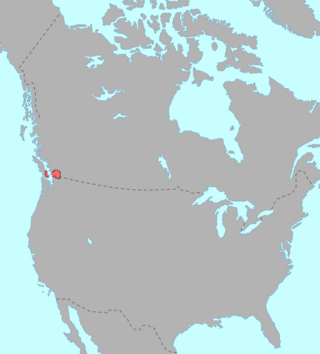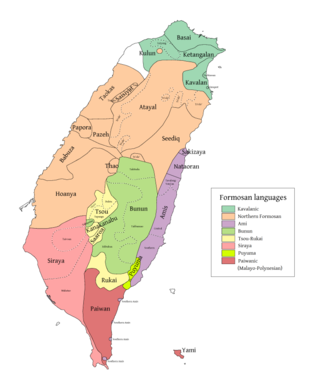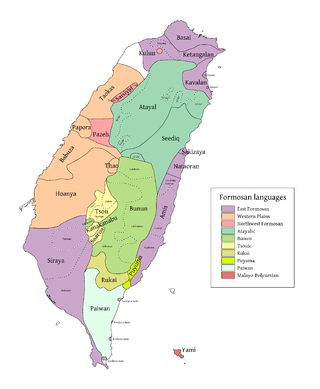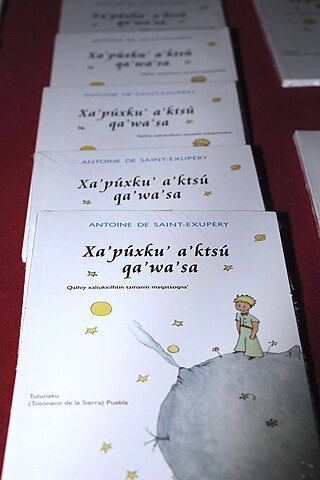Related Research Articles
In grammar, the comitative case is a grammatical case that denotes accompaniment. In English, the preposition "with", in the sense of "in company with" or "together with", plays a substantially similar role.

Crow is a Missouri Valley Siouan language spoken primarily by the Crow Nation in present-day southeastern Montana. The word, Apsáalooke, translates to "children of the raven." It is one of the larger populations of American Indian languages with 2,480 speakers according to the 1990 US Census.

Tzotzil is a Maya language spoken by the indigenous Tzotzil Maya people in the Mexican state of Chiapas. Most speakers are bilingual in Spanish as a second language. In Central Chiapas, some primary schools and a secondary school are taught in Tzotzil. Tzeltal is the most closely related language to Tzotzil and together they form a Tzeltalan sub-branch of the Mayan language family. Tzeltal, Tzotzil and Chʼol are the most widely spoken languages in Chiapas besides Spanish.

Halkomelem is a language of various First Nations peoples of the British Columbia Coast. It is spoken in what is now British Columbia, ranging from southeastern Vancouver Island from the west shore of Saanich Inlet northward beyond Gabriola Island and Nanaimo to Nanoose Bay and including the Lower Mainland from the Fraser River Delta upriver to Harrison Lake and the lower boundary of the Fraser Canyon.
The Nandi language, or Kalenjin proper, are a dialect cluster of the Kalenjin branch of the Nilotic language family.
The Totonacan languages are a family of closely related languages spoken by approximately 290,000 Totonac and Tepehua people in the states of Veracruz, Puebla, and Hidalgo in Mexico. At the time of the Spanish conquest Totonacan languages were spoken all along the gulf coast of Mexico. During the colonial period, Totonacan languages were occasionally written and at least one grammar was produced. In the 20th century the number of speakers of most varieties have dwindled as indigenous identity increasingly became stigmatized encouraging speakers to adopt Spanish as their main language.

Kashaya is the critically endangered language of the Kashia band of the Pomo people. The Pomoan languages have been classified as part of the Hokan language family. The name Kashaya corresponds to words in neighboring languages with meanings such as "skillful" and "expert gambler". It is spoken by the Kashia Band of Pomo Indians of the Stewarts Point Rancheria.
Tariana is an endangered Maipurean language spoken along the Vaupés River in Amazonas, Brazil by approximately 100 people. Another approximately 1,500 people in the upper and middle Vaupés River area identify themselves as ethnic Tariana but do not speak the language fluently.

Kavalan was formerly spoken in the Northeast coast area of Taiwan by the Kavalan people (噶瑪蘭). It is an East Formosan language of the Austronesian family.

Rukai is a Formosan language spoken by the Rukai people in Taiwan. It is a member of the Austronesian language family. The Rukai language comprises six dialects, which are Budai, Labuan, Maga, Mantauran, Tanan and Tona. The number of speakers of the six Rukai dialects is estimated to be about 10,000. Some of them are monolingual. There are varying degrees of mutual intelligibility among the Rukai dialects. Rukai is notable for its distinct grammatical voice system among the Formosan languages.

Pazeh and Kaxabu are dialects of an extinct language of the Pazeh and Kaxabu, neighboring Taiwanese indigenous peoples. The language was Formosan, of the Austronesian language family. The last remaining native speaker of the Pazeh dialect died in 2010.
While other word categories in Ilocano are not as diverse in forms, verbs are morphologically complex inflecting chiefly for aspect. Ilocano verbs can also be cast in any one of five foci or triggers. In turn, these foci can inflect for different grammatical moods.

Tiipai (Tipay) is a Native American language belonging to the Delta–California branch of the Yuman language family, which spans Arizona, California, and Baja California. Tiipai is spoken by a number of Kumeyaay tribes in northern Baja California and southern San Diego County, California. There were, conservatively, 200 Tiipai speakers in the early 1990s; the number of speakers has since declined steadily, numbering roughly 100 in a 2007 estimate.

Wagiman, also spelt Wageman, Wakiman, Wogeman, and other variants, is a near-extinct Aboriginal Australian language spoken by a small number of Wagiman people in and around Pine Creek, in the Katherine Region of the Northern Territory.
Misantla Totonac, also known as Yecuatla Totonac and Southeastern Totonac, is an indigenous language of Mexico, spoken in central Veracruz in the area between Xalapa and Misantla. It belongs to the Totonacan family and is the southernmost variety of Totonac. Misantla Totonac is highly endangered, with fewer than 133 speakers, most of whom are elderly. The language has largely been replaced by Spanish.
Proto-Austroasiatic is the reconstructed ancestor of the Austroasiatic languages. Proto-Mon–Khmer has been reconstructed in Harry L. Shorto's Mon–Khmer Comparative Dictionary, while a new Proto-Austroasiatic reconstruction is currently being undertaken by Paul Sidwell.
Panará, also known as Kreen Akarore, is a Jê language spoken by the Panará people of Mato Grosso, Brazil. It is a direct descendant of Southern Kayapó. Although classified as a Northern Jê language in earlier scholarship, Panará differs considerably from the Northern Jê languages in its morphosyntax and has been argued to be a sister language to Northern Jê rather than a member of that group.
Mekéns (Mekem), or Amniapé, is a nearly extinct Tupian language of the state of Rondônia, in the Amazon region of Brazil.

Totonac is a Totonacan language cluster of Mexico, spoken across a number of central Mexican states by the Totonac people. It is a Mesoamerican language and shows many of the traits which define the Mesoamerican Linguistic Area. Along with some 62 other indigenous languages, it is recognised as an official language of Mexico, though as a single language.

Susan Smythe Kung is the Manager of the Archive of the Indigenous Languages of Latin America at the LLILAS Benson Latin American Studies and Collections at the University of Texas at Austin. Kung is a linguist who specializes in endangered language archiving and the Huehuetla Tepehua language of Hidalgo, Mexico. She earned her doctorate in linguistics in 2007 from the University of Texas at Austin, and her dissertation, A Descriptive Grammar of Huehuetla Tepehua won the Mary R. Haas Book Award from the Society for the Study of the Indigenous Languages of the Americas. Kung is the President of DELAMAN, the Digital Endangered Languages and Music Archiving Network from 2016-2018 and is a founding member of the Linguistics Data Interest Group (LDIG) of the Research Data Alliance.